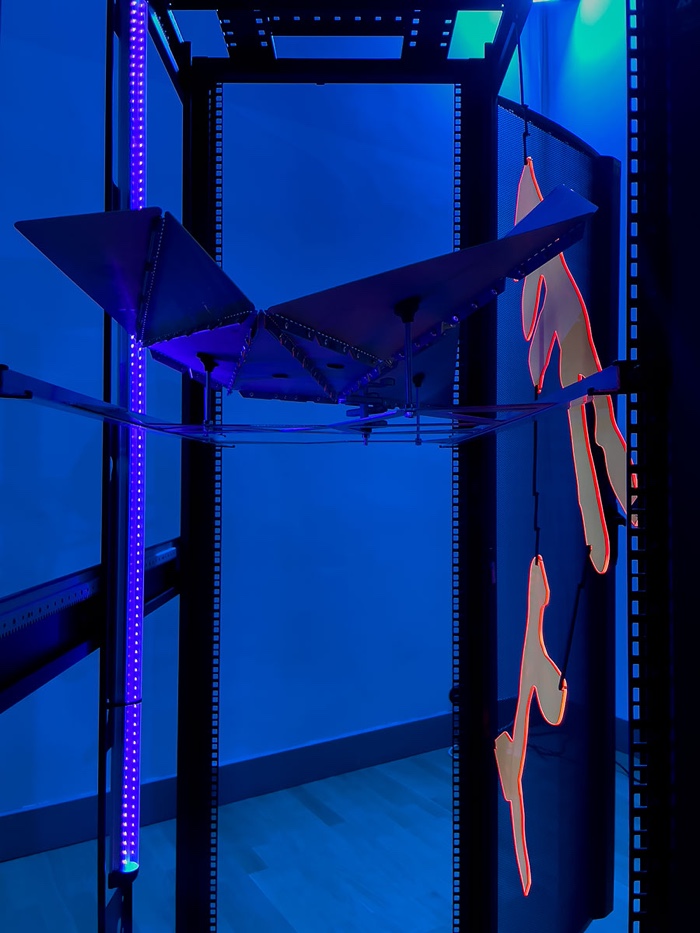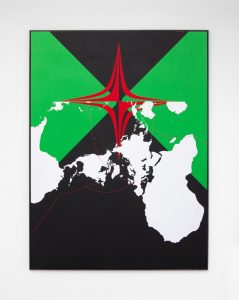During the Cold War, everyone knew what the apocalypse would look like: a nuclear war or a nuclear accident. Today, the threats are multiple and ubiquitous. TEOTWAWKI (The End of the World As We Know It) might come by courtesy of a civil war, an AI mutiny, another Trump presidency, a virus that’s even more aggressive than the ones we have to contend with, a climate gone rogue, a massive asteroid falling on Earth, a vicious episode of cyber warfare… The list goes on and on.
As the feeling of anxiety takes hold, the doomsday prepper sub-culture is steadily growing. Prepping, it turns out, is a lucrative business, with its own reality shows, expos, escape vehicles and dehydrated food kits. But can you really buy your way out of major chaos and catastrophe? Is salvation a question of self-reliance, of being better equipped and prepared than everyone else? Or is it about joining forces and expertise to face together an uncertain and probably unpleasant future? Should we rely on technology or on good old survival skills?

Dunne & Raby, Huggable Atomic Mushroom: Pricilla 37 Kilotons, Nevada 1957, 2004. Photo: Bureau Europa

Bunker, France, ca. 1958–65. Photo: Paul Virilio

Theo Triantafyllidis & Kostis Stafylakis, Readiness Chamber, 2022. Bureau Europa opening Prepper Paradise. Photo: Moniek Wegdam
The questions above are only some of the interrogations that pop in your mind when visiting Prepper Paradise, an exhibition curated by Ward Janssen for Bureau Europa in Maastricht. The show asks you to consider the twofold nature of doomsday culture. It is dark, testosterone-fuelled and slightly disturbing but survivalism also comes with a certain dose of optimism and utopia. A devastated world is a world that will have to be reinvented, redesigned and rebuilt. Prepper Paradise not only explores the ethics, aesthetics and codes of prepper culture, it also investigates how artists, designers and architects look upon unpredictable futures as thought experiments.
I visited Prepper Paradise a couple of weeks ago. It features shorts films, a PDF library packed with publications to educate the aspirant prepper and, of course, design and artworks. Here is a short selection of them:

Theo Triantafyllidis & Kostis Stafylakis, Readiness Chamber, 2022

Theo Triantafyllidis & Kostis Stafylakis, Readiness Chamber, 2022. Photo: Bureau Europa

Theo Triantafyllidis & Kostis Stafylakis, Readiness Chamber, 2022. Bureau Europa opening Prepper Paradise. Photo: Moniek Wegdam

Theo Triantafyllidis & Kostis Stafylakis, Readiness Chamber, 2022. Bureau Europa opening Prepper Paradise. Photo: Moniek Wegdam
In December 2019, just before the outbreak of the Covid-19 pandemic, Theo Triantafyllidis & Kostis Stafylakis organised a LARP (Live Action Role Playing game where participants physically portray characters in a fictional scenario) about the struggle between survivors of a global disaster. In their post-apocalyptic narrative, the players are split into three factions that battle for survival: the doomsday Preppers, the Boogaloo Bois (Civil War accelerationists, with far-right views, weapons and Hawaiian shirts) and the Golden Horde (in preppers speaks, they are the unprepared citizens who will be out roaming, searching, and even looting & pillaging for food and supplies following a major collapse.)
Par of the “Readiness SAGA,” this simulation of social conflict in the US weaves together real and fictional identities and scenarios into a brutal, farcical but ultimately humorous fantasy world. By fore-playing the pending scenarios of an American Civil War which strangely anticipates the violence of the 6 January assault on the US Capitol, the artists seek to dissect the dystopian fantasies of preparedness.
The installation includes footage of the LARP as well as a series of weaponry printed onto aluminium, an egg-shaped preppers’ dwelling and a firepit visitors can gather around.

Stine Deja, Last Resort: Thermal Womb, 2019. Photo: Moniek Wegdam

Stine Deja, Last Resort: Thermal Womb (detail), 2019. Photo: Bureau Europa

Stine Deja, Last Resort: Thermal Womb (detail), 2019
Stine Deja’s work explores the themes of cryonics, the freezing and storing of a body or body part immediately after death. Deja drew her inspiration from Alcor, a company in Arizona where hundreds of bodies, heads or brains, have already been frozen. Alcor charges $200,000 to preserve a body and $80,000 to preserve a head, plus hefty annual membership fees and surcharges.
Alcor freezes the bodies in thermal sleeping bags immersed into metal vacuum insulated storage spaces which are filled with liquid nitrogen at minus 196 degrees Celsius. The bodies are stored upside down to keep the heads chilled for as long as possible in case the cooling system unexpectedly breaks down. It is estimated that, worldwide, approximately 400 whole bodies and even more heads are immersed in liquid nitrogen waiting to be brought back to life at some indeterminate time in the future.
Now the problem is that the technology to restore a body from cryogenic suspension has yet to be developed. Some neuroscientists doubt it will ever be possible. Is cryonics snake oil for the 21st Century? Should resurrection only be available to those who can afford it? What is humanity without mortality? Can a planet, a society sustain a human population that is not only growing thanks to the advances of medicine but will also have to assist “resurrected” people?
The installation, made of five human-sized sculptures, projects the visitor into a future time where the bodies are waking up from cryogenic suspension. They are presented suspended, head-down, on a floor covered with terracotta sand like that of the Arizona desert where Alcor is located.
An animated face at the bottom of the sculpture gives each body an individual identity. The face acts as a kind of portrait panel, not unlike the death masks of Ancient Egypt that were painted in the likeness of the deceased to help their souls recognize their own body in the afterlife.
Deja’s installation reflects on a technological experiment and transhumanist promise: to escape from incurable disease or incoming catastrophe, humans only have to trust that technology will eventually be able to solve any existential crisis.

Meeus Van Dis, The Hydra – Regenerative Efforts, 2022. Photograph by J.P. Geusens

Meeus Van Dis, The Hydra – Regenerative Efforts, 2022. Photo: Bureau Europa
Meeus van Dis’ installation plays with the ambiguous role that water can take in case of a major disaster. Water can be a formidable threat, at the origin of sea level rise, floods, violent storms, etc. On the other hand, water is a precious commodity, a prerequisite for survival. That is why preppers stockpile on water bottles and water filters. The artist encapsulated both faces of water in a series of DIY survival capsules constructed from water tanks. They can withstand the impact of rising sea levels and sudden tidal waves but also act like a floating bunker.
The crafty, speedy architecture contrasts with the lavish escape dwellings that the wealthy commission as an insurance policy. Preferably located in New Zealand, lost in the middle of the U.S. landscape or the European countryside, these luxury shelters feature amenities such as heated swimming pools, golf courses and sometimes even surgical facilities.

Bunker, France, ca. 1958–65. Photo: Paul Virilio
Published in 1975, Paul Virilio’s Bunker Archeology is an analysis and photographic portrayal of the bunkers and fortifications built along the Normandy coast by Germany during WW2. At the time of its conception, the Atlantic Wall was meant to be both military equipment and a monumental visual symbol of the Third Reich. Only the latter purpose has endured. The abandoned reminders of violence led Virilio to contemplate the bunker as a phenomenon that is both a resting place and repository of crisis. Made of thick concrete, the abandoned structures are too expensive to be removed. Some remain half-buried under drifting dunes. Others even became a sign of climate change, with land erosion and sea level rise threatening to submerge them.
Today, bunkers have become one of survivalists’ architectures of choice, potentially reviving the dangers that these structures embodied.

Ted Noten, 7 Necessities: Trophy Helmet, 2013
As Triantafyllidis and Stafylakis’ Readiness Chamber caustically demonstrates, the world of preppers and survivalists tends to have a bit of a rank alpha male aura. Women are welcome to make preserves, take care of children and be the sidekick of the virile hero. In preppers’ narratives, there is no space for frills. Or for women’s specific needs.
In 2013, designer Ted Noten created a kind of ‘survival package’ to help modern women face their societal struggles. One of the seven objects in the kit is the Trophy Helmet. Acting as jewellery, archetypal totem and practical armour for feminine survival, the helmet is made from 3D printed plastic, lined with fur and reinforced with metal and gemstones. It is also equipped with radar, telescope and night vision goggles.
The semi-militarised accessory suggests a woman ready to defend herself against dangers.
More images from Prepper Paradise:
Rustan Söderling, Tannhäuser Gate (not really now not anymore), 2017

Dennis de Bel, Mountain Stronghold, 2022

Dennis de Bel, Mountain Stronghold, 2022

The Prepper PDF Library. Prepper Paradise Opening. Photo: Moniek Wegdam

The Prepper PDF Library (detail). Photo: Bureau Europa

Prepper Paradise Opening. Photo: Moniek Wegdam

Prepper Paradise Opening. Photo: Moniek Wegdam

Prepper Paradise Opening. Photo: Moniek Wegdam
Prepper Paradise, by guest curator Ward Janssen, remains open at Bureau Europa in Maastricht until 14 August 2022.
Related stories: Preppers and the YOYO (You’re on your own) culture; Absolute Beginners: making the basic goods you might need when economies collapse; The Ends of Everythings. Mental strategies to deal with the Apocalypse; The Clearing. How to live together when sea levels rise and global economy collapses, Radicalization Pipeline, etc.







